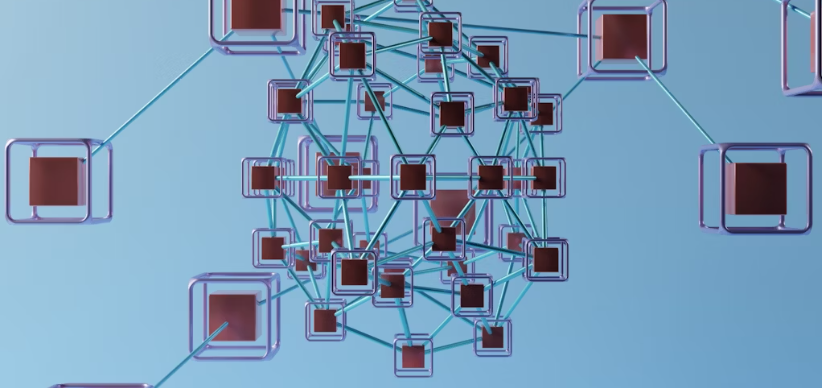Every generation of wireless tech shapes new ways to connect, share, and solve problems. Now, 5G and the networks coming after it promise to bring unimaginable speed, near-zero delay, and a level of connectivity never seen before. These advancements aren’t just technical upgrades. They’re the engine behind smarter cities, safer cars, better healthcare, and easier ways to play and work.
The move to 5G and future networks changes what’s possible, both for people and for industries. Reliable, high-speed, and flexible networks touch nearly every part of daily life, making each connection smarter and more useful. This lift in connectivity pushes new business models to the forefront and allows for ideas that simply weren’t possible on older systems.

The Key Features and Capabilities of 5G and Next-Generation Networks
5G brings a complete overhaul in how mobile networks perform. Earlier generations got us mobile browsing and streaming, but 5G raises the bar across the board and sets the stage for what comes next.
Speed, Latency, and Reliability Improvements
Speed makes a difference you can feel. With 5G, download speeds can reach up to 10 Gbps, meaning movies, software updates, or huge files arrive in seconds. Previously, 4G topped out at about 100 Mbps in everyday use, which is fast but nowhere close to what 5G offers.
Key speed changes:
| Generation | Peak Download (Mbps) | Typical Latency (ms) |
|---|---|---|
| 3G | ~2 | 100-500 |
| 4G LTE | ~100 | 30-70 |
| 5G | 1,000 – 10,000 | 1-10 |
Ultra-low latency is a game-changer for everything instant. With responses measured in a few milliseconds, 5G makes real-time remote control, live gaming, and virtual meetings happen without lags or glitches. Networks get more reliable too, which matters when lives or millions of dollars depend on connections staying solid.
Network Slicing and Customization
Older networks treated every user the same, like everyone sharing the same highway lane. 5G introduces network slicing—giving each user or device its own “lane” for unique needs. Whether it’s a remote doctor using a robot hand, a factory full of machines talking to each other, or crowds at a concert all posting videos, everyone gets just what they need.
Network slicing supports:
- Hospitals needing split-second accuracy
- Factories requiring nonstop data flows
- Public safety teams running their own secure systems
- Everyday users streaming or gaming with clean, steady speed
This custom fit paves the way for new services and boosts confidence for businesses to try advanced tech.
Transforming Innovation Across Industries
5G isn’t just faster streaming—it’s a launchpad for breakthroughs across nearly every sector. Faster and more reliable networks help companies build smarter tools and services.
Healthcare: Telemedicine and Remote Surgery
Think about doctors examining patients from a different city, or performing complex surgery from thousands of miles away. With 5G’s instant response time, healthcare experts connect to remote operating rooms or rural clinics as if they’re in the next room. High-quality video, real-time imaging, and precise robotic movement become safe and practical.
Real-world examples show cancer care, heart surgery, and stroke diagnosis improved when experts can act right away, not after minutes or hours. Ambulances stream patient data straight to ER doctors while en route, making every second count.
Automotive: Connected and Autonomous Vehicles
Self-driving cars are built on trust in data. 5G supplies that trust, giving cars, traffic lights, and roadside sensors a fast way to talk with each other. The term “vehicle-to-everything” (V2X) covers cars connected to other cars, the road, the city, and even the driver’s devices.
With split-second updates, 5G lets vehicles spot danger, avoid crashes, and ease up on traffic jams. Imagine cars warning each other about sudden braking ahead or emergency vehicles getting a clear path through city streets without delay.
Smart Cities and IoT Expansion
Cities are becoming more connected than ever, with everything from utility meters and public transport to security cameras online. 5G’s ability to handle millions of devices per square mile makes this growth possible.
What becomes smarter:
- Energy grids that spot waste and adjust in real-time
- Water and air sensors that give early warnings
- Smart streetlights tuned to save energy
- Trash cans that signal when they need emptying
With 5G, city leaders use real-time data to reduce congestion, fight pollution, and make spaces safer for everyone.
Entertainment and Immersive Experiences
Streaming without buffering and cloud gaming that rivals console quality—these are just the start. 5G’s speed and stability open doors for virtual reality (VR) and augmented reality (AR) experiences that don’t need bulky headsets or expensive hardware. Immersive events, such as live concerts or sports, feel more personal with 360-degree video and interactive layers.
Content adjusts in real time based on what users like, where they look, or who they’re with. Personalized media becomes a reality, not a marketing buzzword.
Conclusion
5G brings much more than speed. It launches new ways to heal, drive, play, and live. These networks push industries to rethink what’s possible, speeding up change across every part of life. The shift to next-generation connectivity means a smoother, smarter, and more creative future.
Already, the tech world is looking past 5G toward what’s next—networks that may someday connect not just things and people, but ideas in ways we’re only starting to dream about. As 6G and beyond take shape, the world can expect more surprises, more connections, and a future where innovation moves as fast as imagination.